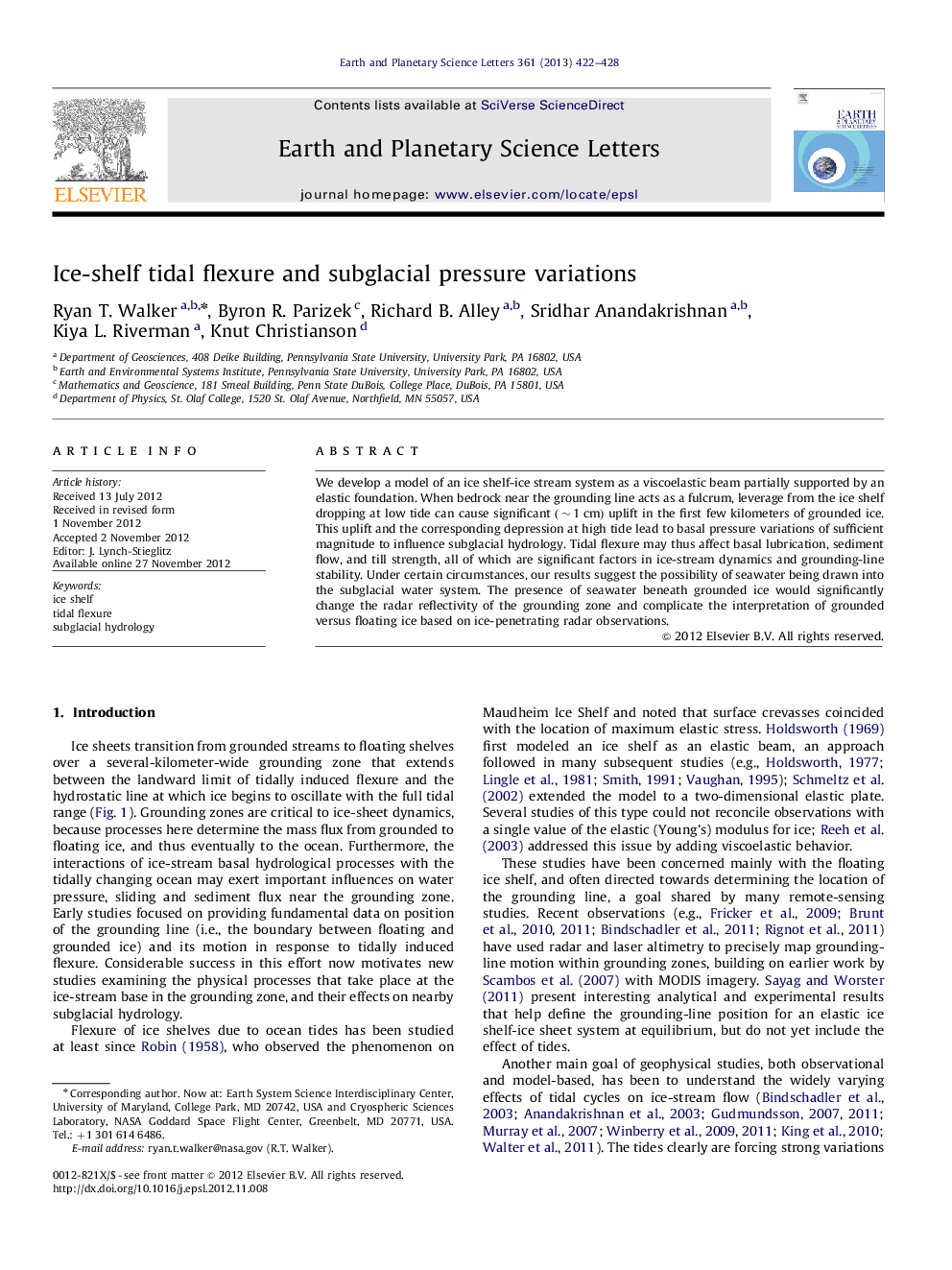| Article ID | Journal | Published Year | Pages | File Type |
|---|---|---|---|---|
| 4677193 | Earth and Planetary Science Letters | 2013 | 7 Pages |
We develop a model of an ice shelf-ice stream system as a viscoelastic beam partially supported by an elastic foundation. When bedrock near the grounding line acts as a fulcrum, leverage from the ice shelf dropping at low tide can cause significant (∼1cm) uplift in the first few kilometers of grounded ice. This uplift and the corresponding depression at high tide lead to basal pressure variations of sufficient magnitude to influence subglacial hydrology. Tidal flexure may thus affect basal lubrication, sediment flow, and till strength, all of which are significant factors in ice-stream dynamics and grounding-line stability. Under certain circumstances, our results suggest the possibility of seawater being drawn into the subglacial water system. The presence of seawater beneath grounded ice would significantly change the radar reflectivity of the grounding zone and complicate the interpretation of grounded versus floating ice based on ice-penetrating radar observations.
► Tidal flexure of ice shelves can produce pressure variations under grounded ice. ► These variations can be large enough to influence subglacial hydrology. ► Seawater could be drawn under grounded ice, affecting ice-penetrating radar.
